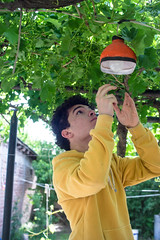
- Click Here For More Specific Information On:
- Brisbane Tender Writer
byadmin
When you are drinking your favorite carbonated beverage, are you thinking about how it got this way? Probably not, but there is a process involved in providing the fizzling and bubbly effect we enjoy. Manufacturing carbonated beverages is divided into the following processes:
* Carbonation
* Filling and packaging
* Sugar dissolving process
* Deaeration of water preparation
* Preparing and blending all the ingredients
* Thermal treatment
What Is A Carbonation System?
The carbonation system configurations, involve a batch operation, which uses blending tanks or a continuous operation for more volume and advanced production requirements. Other processing solutions, include:
* Beer & Beverage Carbonation – Beer and beverage carbonation is a concise mixing of C02 and N2 gas blending for fountain sodas and beer products, such as ales, lagers, and stouts.
* Chemical Blending – Chemical blending is a chemical process, where organic and inorganic chemicals can be blended. The process involves multi-component blending, homogenization, liquid compounding, intensity and liquid powder combination. Chemical blending is one of the frequent kinds of chemical process which is commonly used in this application. The mixing procedure can potentially save manufacturers time, labor, inventory, and transportation costs. Substance could be blended in liquid form to a variety of pH levels and viscosity. This service consists of multi-component blending, homogenization, liquid compounding, high Intensity and liquid powder combination. This process follows a set formula to a batching collector. It doesn’t require any batching vessels for the finished product in homogenization and each dosing amount is accurately controlled.
* Alcohol Blending and Proofing – Alcohol blending is a specific formulation which dilutes and lightens the tones of alcoholic beverages, like beer, wine, and liquor. Alcoholic beverages are based on fermentation and the process of decomposition of organic materials which contain carbohydrates for proofing. Alcohol blending involves distillation that reduces its water content and increases its strength. Blended alcoholic beverage processes involve color adjustments, flavoring ingredients, and a high-proof ingredient with a low compound content.
* Spray and Membrane Deaeration – All beverages are subject to dissolved oxygen which affects its color, taste, vitamin content and its shelf-life. There are different techniques for water deaeration, such as pressure, vacuum, and a combination of both. A specialized spray-vacuum deaeration system is designed to help reduce entrained O2 and other gasses in process water. This system creates a high vacuum environment, where process water is sprayed. As the process water enters the vacuum tank, it is diffused and atomized to create maximum surface area, allowing the trailing gases to escape the water.
The Best in CarbonationThe Waukesha, Wisconsin, TechniBlend Inc. carbonation system is used by different industries including food and beverage manufacturing, consumer and personal care production, and chemical blending. They are a process engineering and automation control company which designs, engineers, builds, and controls both the equipment and complete plants. Their technological solutions allow for more enhanced efficiency, productivity, and guaranteed quality which ensures a large return on your investments.